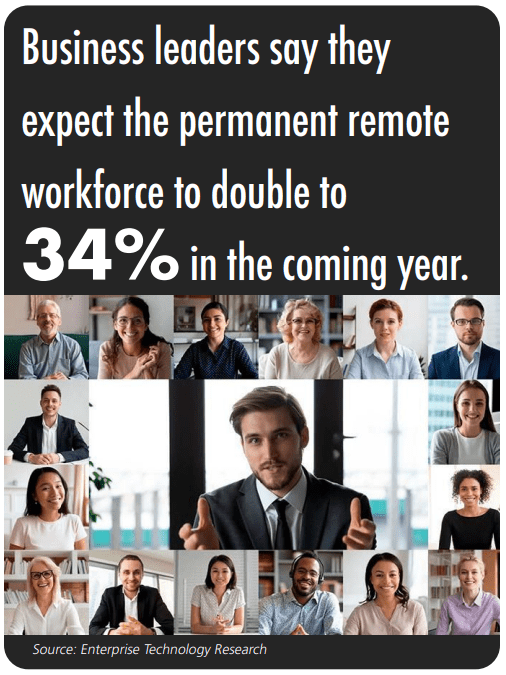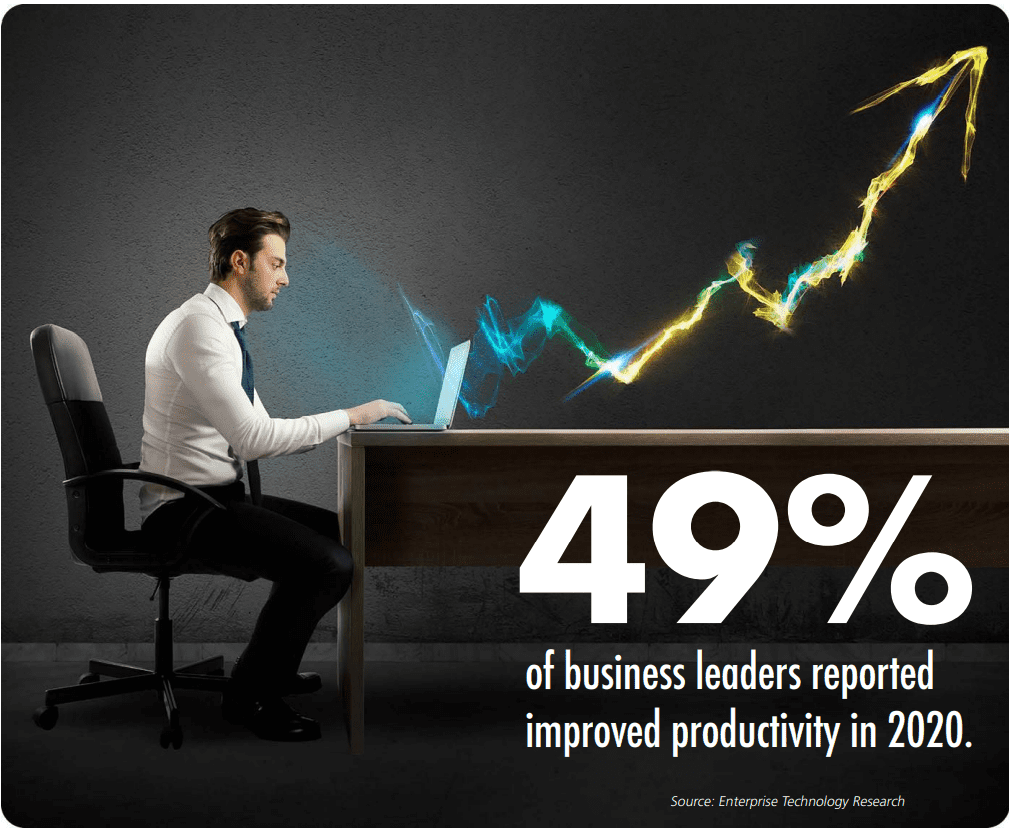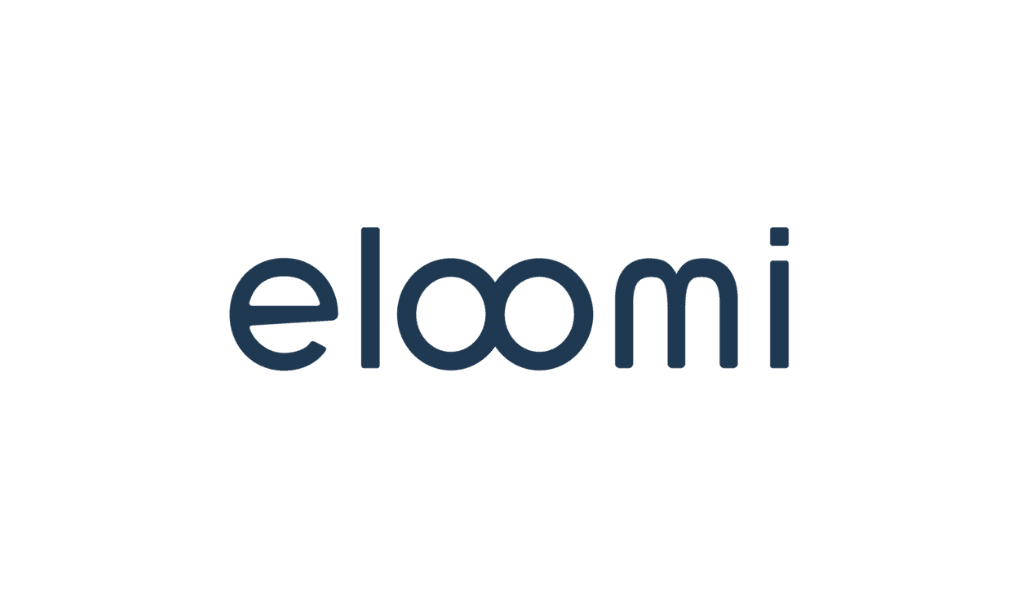Hiring in a digital world is expanding opportunities for employers and employees alike, but certain challenges remain.
By Debra Lopez
Home offices, kitchen tables, living room couches, an occasional parked car: As people across the globe spent the last year logging on to work from wherever they could, an interesting thing happened. Productivity increased.
In a recent survey conducted by Enterprise Technology Research, executives across several industries worldwide were asked to report changes in productivity and remote work during the pandemic and predict the status of those factors in 2021. With 49% of respondents reporting improved productivity over the last year, decision-makers surveyed said they expect permanent remote work to double to 34% in the coming year. Permanent remote work, they said, will prompt an estimated 2% budget increase for the technology needed to support that scenario.
Currently, many companies are finding themselves in need of skilled employees who can fill the gaps left by a sudden shift in the marketplace. Small businesses that swiftly made the switch to remote during the stay-at-home order, for example, now require digital experts who can help them sustain that presence effectively. For job-seeking individuals whose skills fit today’s changing landscape, the market is wide open.
How can businesses find and hire the right employees? With new ways to recruit, interview, and onboard, the hiring process has gone through a transformation. There are upsides for both employers and employees when these new methods are maximized.
Reaping the Benefits
The upsides are plentiful when it comes to remote work. For employees, the flexibility to structure their day can lead to increased productivity while also contributing to a better work-life scenario. Companies looking to hire talent benefit from the ability to draw from an expansive candidate pool -one without the limitations of a commutable radius. The ability to cast a wider net regardless of geography also enables hiring managers to be more selective as they seek the best overall fit for a position. At a time when specific skills are in high demand, that flexibility is a tremendous advantage.
That said, businesses must support their dispersed workforce with the technology and resources to contribute productively and achieve success. When reflecting on the business challenges of 2020, a PWC study found that when employees didn’t have the tools to fully support collaboration, creativity, and communication, a lack of standardized technology impeded productivity.
A Step Ahead
Prior to 2020, the conversation around digital disruption was focused on long-range strategies for a shifting marketplace. Businesses took a measured approach to upskilling their employees with critical skills and competencies, allowing them to bring the right talent and technology into their organization. The pandemic changed all of that, precipitating several years of digital transformation to take shape in a matter of months.
Today, companies are focused on bringing in specialists who are already up to speed on those competencies, and rethinking their hiring strategies to focus on relevant skills needed to drive their business forward. To successfully grow a skills-based team, businesses need to think strategically long before seeking candidates.
Analyzing job posts from traditional and nontraditional competitors can offer a glimpse into the emerging skills landscape, while breaking key roles into their required critical skills and competencies can indicate where internal gaps exist. Looking forward, leadership must study the horizon to determine what future talents will be in demand as their organizations move forward in order to create a robust talent pipeline.
 Onboarding and Communication
Onboarding and Communication
Amid the rapid changes in today’s workforce dynamic, one giant elephant remains in the room. Human connection, arguably taken for granted before 2020, is now an element that companies struggle to substitute in a virtual world. There is something to be said about the energy in a room when meeting in person.
Hiring managers can find some success reading body language and tone with the help of video platforms during the interview process, but training and orientation continue to present a challenge. Therefore, what can’t be conveyed in person must be built into a well-thought-out, interactive onboarding plan.
Employees need to feel an immediate connection when joining a virtual team. In preparation for day one, businesses can create that sense by ensuring new hires are set up for success. Sending any supplies or equipment in advance, making sure all logins and passwords have been sent ahead; these small steps go a long way in supporting a positive experience. When live video introductions aren’t possible, senior leadership can record video addresses, welcome new employees, and describe their role in the organization, stressing the importance of the new hire’s contributions to the team.
Beyond day one, an intentional communication plan that includes frequent check-ins is critical to maintaining communication within a distributed workforce. Team meetings and one-on-one sessions need to be prioritized to encourage dialogue around projects, challenges, and resource requests.
Mental and emotional health is a crucial consideration as well; taking the time to ask an employee how they are faring in their remote environment can foster a sense of compassion, while virtual team building activities can offer a needed boost to morale.
As business leaders reimagine the future of their companies post-pandemic, the hiring process is evolving to meet the moment. Building on the strengths of available platforms and methodologies, hiring managers have an opportunity to build a skills based staff that benefits their business and workforce, fortifying both for the opportunities ahead.
Debra Lopez is the senior vice president of employee experience at Vensure HR















